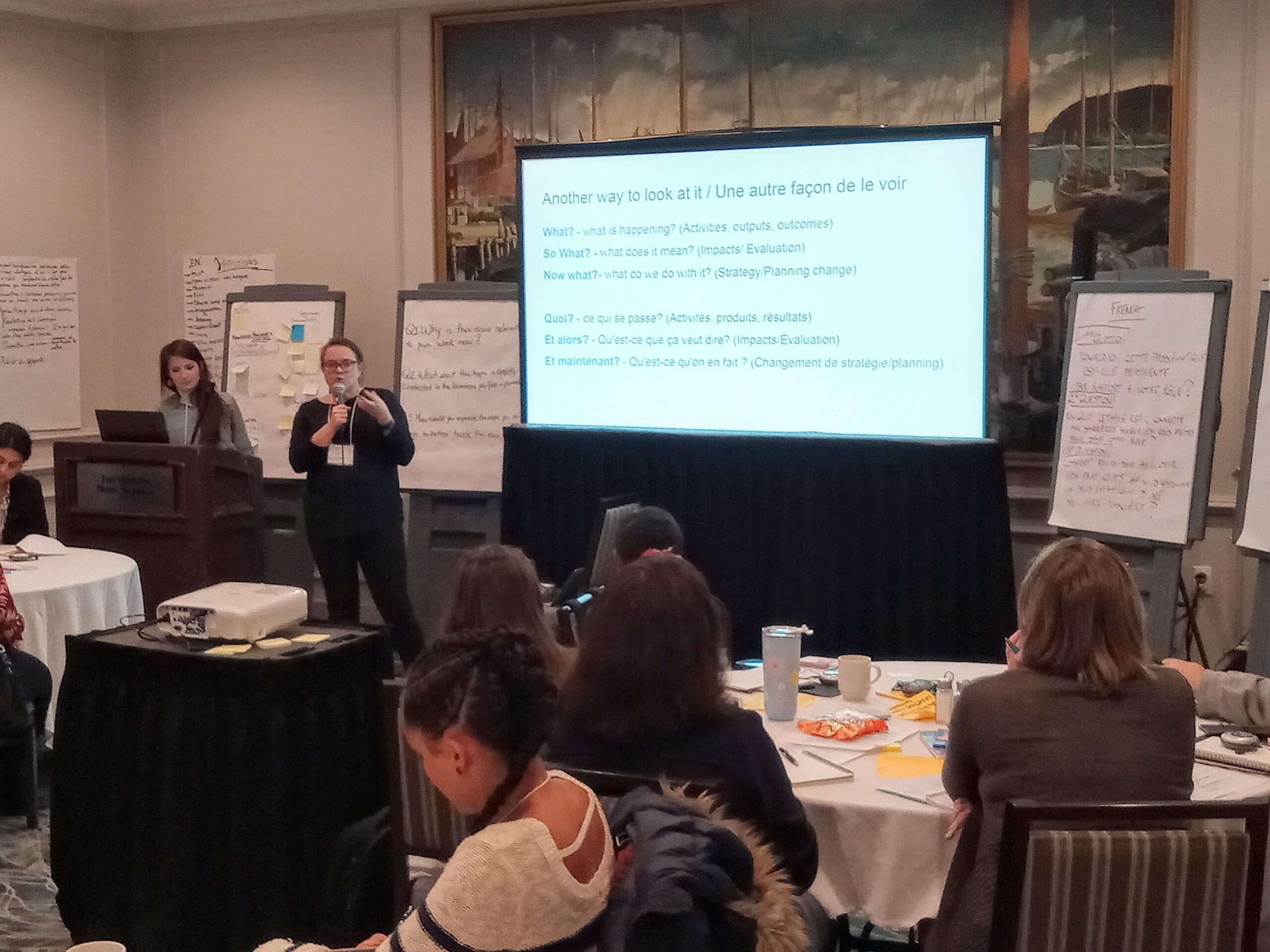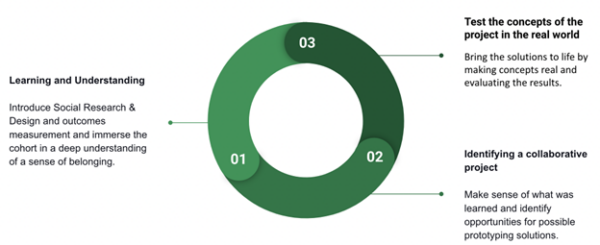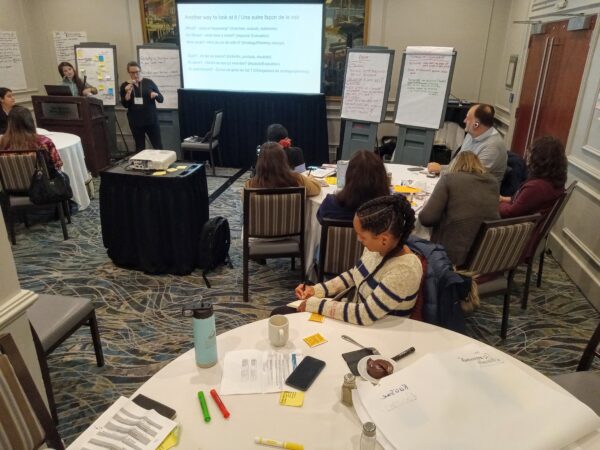I2 – Making Impact with ARAISA

In partnership with the Atlantic Region Association of Immigrant Serving Agencies, we launched Innovating for Impact I2 Innover pour impacter a year ago, with support from the IRCC.
The nature of the project is to help build capacity around social innovation and social research and development among staffs of Immigrant-Serving Agencies, with the ultimate goal of developing a sense of belonging among newcomers.
Through the process of an Inspiring Communities and an ARAISA staff member each co-leading the building of these educational cohorts, both organizations had an opportunity to deepen our practice in the skills of collaboration. If you’re familiar with Bruce Tuckman’s model about project teams, there was indeed some iterative spells of storming and norming before there was performing, and these growth pangs influenced our work in many ways, including how we assess readiness for future collaborations.
The Project
Planning the shape of the three year project was the first step, and then developing a curriculum to lead the first cohort through the learning. The first cohort was run online. Of course, as often happens, much of the learning was on the part of the project team.
Elissama Menezes is the IC lead of the project, and she describes the approach to the second cohort this way:
We started the outreach work for cohort 2 in October. For this cohort, we adapted the human-centered design model to the reality of the sector, people, and the timeline we have. Therefore, we summarized the five stages into three (see the image below).

The agenda of the social lab was defined according to this model. The first phase (learning and understanding) was tackled during the online sessions starting on November 23rd. We had three online training and coaching sessions as part of the first phase.
Then on December 5th, we started the in-person sessions to cover the second phase of the process (Identifying a collaborative project). The intense in-person sessions started at 6:30 am and ended after debriefing around 6 pm. We had 20 participants attending the in-person sessions and leaving the training with a concrete idea for a collaborative project.
We are hosting coaching sessions in the following months and follow-up to cover the third phase of the project. We will also organize webinars to invite experts to speak on the challenges the groups will face through the ideation and prototyping phase.
This cohort seems more open to complexity and embracing the learning process. And the team is better prepared to work with the cohort this time. We also had more precise roles in this cohort than in the first.

The Impact at All Levels
We initially focused on the possibilities of the cohorts helping us scale out our social innovation practices, but came to realize that, as with all systems work, it was a multi-level situation. We were offering new tools to the ISA staffs, yes, but also through our partnership, the IRCC was gaining new insight into our approach and the different relationship it asks of funding agencies.
IRCC had an expectation of a certain kind of report and evaluation that would be typical of their funding relationships with other nonprofit agencies. But developing social innovation skills and demonstrating their impact is long term, and requires tools like developmental evaluation to recognize early signs of change. Assessments like numbers of attendees or before and after attitude or awareness surveys offer little insight into the real effect. Helping both ARAISA and IRCC gain comfort with this idea was an aha moment for Inspiring Communities in terms of 360 degrees of impact.
Finally, IC has been grateful to ARAISA and IRCC for this opportunity to gain insight into the new knowledge in the immigrant serving space, particularly how to engage “outsiders.”
The I2 project will be presented at two upcoming events:
- Pathways to Prosperity 2023 Virtual Workshop Series in January 2023
- Metropolis Conference (1 roundtable and one panel) in-person in Ottawa in March 2023
IC Takeaways
Social innovation and Social R&D, while not new to the region is not widely known across sectors.
This brings the challenges you might expect, especially for a nonprofit organization. We are building our practice and our understanding of the work, while providing leadership among our peer impact organizations. Part of our work is helping collaborators, funders and partners understand systems change approaches, changing typical metrics and managing expectations that are based on other approaches and which may not work in this field.
We are called to demonstrate the value of a different way of thinking. A large part of the work involves examining root causes and shifting mindsets in light of what is discovered.
“Demonstrating the value of a different way of doing things, and thinking about what you do takes time and is difficult,” Louise, our Executive Director, coached the I2 project team. “It’s really important you stick with this and help continually create space for participants in the cohorts to develop those skills and expand that capacity.”
Another necessary part of the approach is a systems lens; our collaborative work is giving us the opportunity to demonstrate the applicability of our approach with diverse sectors. We expand our perspective, draw insights from, and learn about, other sectors in connection to our projects and activities. These include equity-centered climate action; youth outreach and engagement; individual and collective wellbeing; and so on.
We are also learning about how we might learn from, and with others, in our communities and thematic spaces as well as whether our approach to work and our lessons along the way might be helpful to them in their contexts.
Share this:
Comments are closed